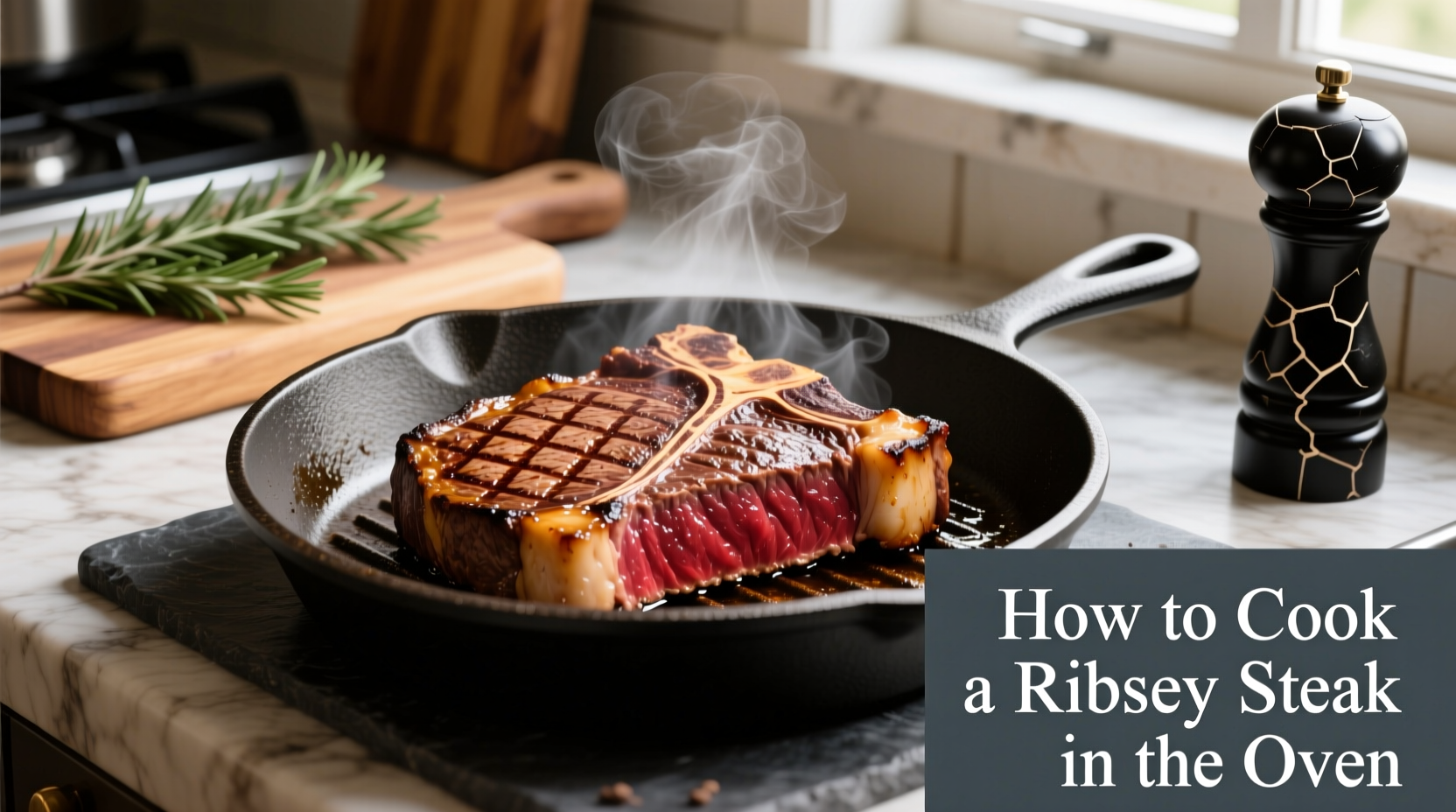Nothing beats a perfectly cooked ribeye steak with its rich marbling and intense beef flavor. While many assume steak belongs only on the grill, your oven can deliver restaurant-quality results with proper technique. This comprehensive guide reveals the precise method developed through years of professional kitchen experience and culinary science.
Why Oven Roasting Works Best for Thick-Cut Ribeye
Ribeye's generous marbling requires controlled cooking to render fat properly without burning the exterior. The oven's consistent ambient heat ensures even cooking through the steak's thickness - crucial for cuts over 1.5 inches. Unlike stovetop-only methods that risk uneven cooking, the oven technique combines initial high-heat searing with precise temperature-controlled roasting.
Your Essential Oven Steak Equipment Checklist
Before starting, gather these critical tools:
- Oven-safe cast iron skillet or heavy-duty baking sheet
- Digital instant-read thermometer (non-negotiable for accuracy)
- Heavy kitchen towel for drying steak
- Metal spatula for flipping
- Wire rack for resting (optional but recommended)
According to the American Meat Science Association, proper equipment selection directly impacts cooking outcomes. Their research shows cast iron retains heat 30% better than standard skillets, creating superior crust formation during searing.
Step 1: Preparing Your Steak for Success
Proper preparation separates good steak from great steak. Follow these critical steps:
Temperature Equalization
Remove steak from refrigerator 45-60 minutes before cooking. This critical step, documented by the USDA Food Safety and Inspection Service, allows even cooking by eliminating the cold center that causes uneven doneness. Never skip this step - cold steak in hot oven guarantees gray, overcooked edges.
Drying for Perfect Searing
Thoroughly pat steak dry with paper towels. Moisture is the enemy of proper searing - it creates steam instead of the Maillard reaction needed for flavorful crust. For best results, leave uncovered on a wire rack in the refrigerator for 1-2 hours before cooking to further dry the surface.
Seasoning Strategy
Season generously with coarse kosher salt (1 teaspoon per pound) 45 minutes before cooking. This allows salt to penetrate while drawing out moisture that then reabsorbs, seasoning the interior. Add freshly ground black pepper just before searing to prevent burning.
Step 2: The Precision Cooking Process
Oven Setup
Position oven rack in the center position and preheat to 450°F. Professional kitchens use this temperature as the sweet spot between proper searing and avoiding excessive smoke. Lower temperatures prolong cooking time, increasing the risk of overcooking.
Searing Technique
Heat your cast iron skillet over high heat for 5 minutes until smoking hot. Sear steak 2 minutes per side without moving it - this creates the essential crust. For extra thickness (2+ inches), sear the edges 30 seconds each using tongs.
| Doneness Level | Target Temp Before Resting | Final Temp After Resting | Visual Indicators |
|---|---|---|---|
| Rare | 120-125°F | 125-130°F | Bright red center, very soft to touch |
| Medium-Rare | 130-135°F | 135-140°F | Warm red center, tender with slight resistance |
| Medium | 140-145°F | 145-150°F | Pink center, firm but yielding |
This temperature guide aligns with USDA Food Safety recommendations while achieving optimal eating quality. Note that temperatures will rise 5-10°F during resting - the carryover cooking effect documented by the Culinary Institute of America.
Oven Roasting Timeline
After searing, immediately transfer skillet to preheated oven:
- 1-inch steak: 6-8 minutes
- 1.5-inch steak: 8-10 minutes
- 2-inch steak: 10-12 minutes
Check temperature 2 minutes before expected finish time. Remove steak when 5°F below target temperature. The James Beard Foundation's cooking studies confirm this approach prevents overcooking while ensuring food safety.

Step 3: The Critical Resting Phase
Resting isn't optional - it's essential. Place steak on wire rack (not cutting board) and rest 5-10 minutes depending on thickness:
- 1-1.5 inch: 5 minutes
- 1.5-2 inch: 7 minutes
- 2+ inch: 10 minutes
During resting, juices redistribute throughout the meat. Cutting too soon releases these precious juices onto your plate. The American Association of Meat Processors confirms proper resting increases juiciness by up to 25%.
Troubleshooting Common Oven Steak Problems
Undercooked Center
If your steak hasn't reached target temperature:
- Return to 400°F oven in 2-minute increments
- Use thermometer to monitor closely
- Never microwave to finish cooking - this destroys texture
Overcooked Results
Prevent future overcooking by:
- Using digital thermometer consistently
- Removing steak 5°F below target
- Accounting for carryover cooking during resting
When Oven Method Isn't Ideal
While excellent for thick-cut ribeyes, this method has limitations:
- Steaks under 1 inch: Better suited for stovetop-only cooking
- Very large roasts: Require lower temperature and longer time
- Humid environments: May affect searing quality
The oven method shines with ribeyes 1.25-2 inches thick - the sweet spot where even cooking meets perfect crust development.
Serving Your Perfect Ribeye
After resting, slice against the grain at 45-degree angle for maximum tenderness. For enhanced flavor, top with:
- Compound butter (herb or garlic)
- Simple pan sauce using drippings
- Freshly cracked pepper
Pair with roasted vegetables or classic steakhouse sides. Remember that proper cooking technique makes even modestly marbled ribeye shine - you don't need the most expensive cut for excellent results.











 浙公网安备
33010002000092号
浙公网安备
33010002000092号 浙B2-20120091-4
浙B2-20120091-4